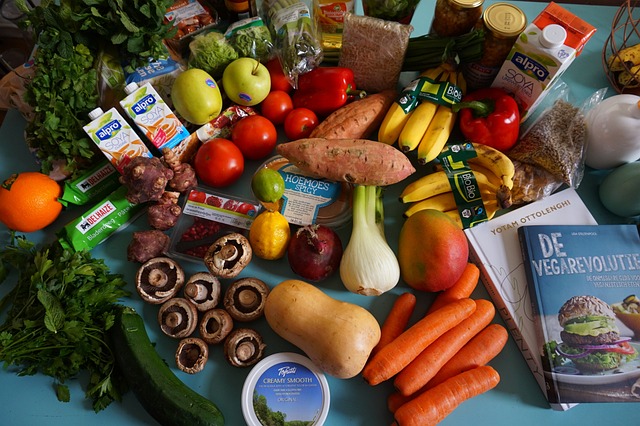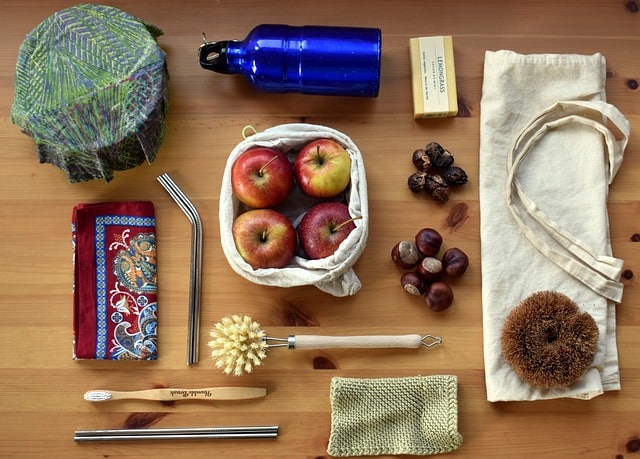Introduction – Zero Waste On A Budget
The zero waste concept has a lot to offer in the way of carbon reduction because it encourages consumers to consider to reduce consumption from the point of view of the life cycle from manufacturing to disposal. Reduction of consumption means less use of energy, raw materials, and resources and therefore less carbon emissions.
On the other hand, the zero waste movement has a reputation for pining for wild and impractical items like reusable straws, bamboo toothbrushes and menstrual cups. However, the movement has more to offer. In this post I will share some ideas about how to go zero waste on a budget.

Going for zero waste living can be costly. However, you can make things easier by choosing environmentally-friendly products that are less expensive. If you want to find ways to save money and be more environmentally friendly, these zero waste tips are perfect for you. These tips can help anyone, whether you’re a student, parent, or professional. So let’s take a look at some easy ways to get started with going green.
10 Simple Ways To Go Zero Waste On A Budget
Many people are now making the switch to a more environmentally-friendly lifestyle by reducing their waste and using greener products. This can be an expensive endeavor, but it doesn’t have to be! Here are some simple tips for making your zero waste efforts as budget-friendly as possible:
1. Investing In Refillable Items Like Shampoo And Conditioner
Investing in refillable items like shampoo, conditioner, and laundry detergent is a great way to reduce your waste. Refillable items are usually more cost-effective than buying single-use containers, and they also help minimize waste.
Refillable containers can be used multiple times and often require less packaging than single-use containers. Additionally, you can often find refillable items in bulk, which makes them even more cost-effective. By investing in refillable items, you can help the environment, save money, and reduce your waste. In general, regarding bottle items, there are a number of things you can do like this for making a zero-waste bathroom.
2. Use Your Own Reusable Bags
Another great way to save both money and the environment is to bring your own reusable bags when you go shopping. Using plastic or paper bags at the store can quickly add up, so having a few sturdy bags on hand that you can reuse over and over again will help cut down on waste and costs. You can even find durable shopping bags that fold up into a small pouch for easy storage!
3. Get Creative With Leftovers
One of the biggest contributors to waste in our society is food – whether it’s food scraps being thrown out or leftovers that get neglected. But by getting creative and using up all of your leftovers instead of throwing them away, you can reduce your overall food expenses significantly.
For example, you can make a frittata with leftover veggies from the night before, turn those extra slices of bread into homemade croutons, or create an entirely new dish by mixing together different ingredients in your fridge.
What about food prep waste? Well it turns out that things that you think are waste are actually useful. For example take a look at our article on how to use old orange peels. We go over 10 ideas to put them to use.
4. Find Alternatives For Single-Use Household Items
While some items are impossible to replace, it’s still possible to reduce waste and save money by looking for reusable alternatives for items that typically get thrown away after a single use. This could include purchasing reusable kitchen sponges and reusable paper towels instead of paper towels or switching out plastic wrap with beeswax food wraps that you can wash and use again and again. Other examples include replacing disposable razors with ones made from metal or bamboo, using safety razors, or switching out plastic menstrual cups for sustainable alternatives.
5. Shop In Bulk
When possible, opt for large quantities of food and household items that are sold in bulk instead of pre-packaged goods from the store. Not only will this help you save money, but it also reduces waste since you won’t be buying unnecessary packaging when you shop. Another great option is to look for local vendors selling unpackaged produce or even joining a CSA with a focus on farm-to-table options!
6. Get Smart With Your Grocery List
Being strategic about your grocery list can make all the difference when it comes to being more eco-friendly on a budget. Rather than tossing items into your cart without a second thought, take the time to look at what you already have on hand and make sure you’re not buying duplicates or items that will end up getting thrown out.

7. Shopping at Farmers’ Markets And Buy Local
Shopping at farmers’ markets and buying local produce is an excellent way to reduce your waste and save money. Farmers’ markets offer a wide variety of fresh, seasonal produce, often at prices lower than those of supermarkets. By buying locally, you are supporting your local economy, reducing transportation costs and carbon emissions, and promoting sustainable agriculture. Plus, when you buy directly from farmers who take pride in their products, you know you’re getting the freshest and best quality produce available. Shopping at farmers’ markets is a great way to reduce waste and support your local community.
8. Donate Or Recycle Old Clothes And Other Items
Whether you’re a fashionista who constantly gets new clothes in the mail, or you have old items taking up space in your closet and drawers, there are ways to reduce waste while still coming out ahead financially. Websites like ThredUp make it easy to send in gently used clothing to be sold at secondhand stores across the country – which is great if you don’t want to deal with photographing each item individually! If your outdated electronics or old household items are taking up space in your home, you can also look into selling them on websites like Ebay or Craigslist to earn a bit of extra cash.
9. Switch Over To A Zero-Waste Beauty Routine
While there may be some initial costs associated with starting your zero-waste beauty routine (such as purchasing shampoo bars and reusable cotton rounds), it’s overall an extremely inexpensive option compared to the cost of constantly buying new products packaged in plastic containers. Not only that, but since you won’t be putting chemicals into your body when using these products, you’ll likely end up saving money on health care expenses in the long run. It may take some time to find the products that work for you, but the benefits are well worth it!
10. Participate In Zero Waste Challenges On Social Media
Social media is a great way to stay motivated when trying to live more sustainably, as there are countless zero waste and sustainable living challenges available for participants to complete. Not only can this give your eco-friendly lifestyle some structure, but it’s also a great way to connect with other people who have similar goals. Some of the most popular sustainability challenges include the Plastic Free July Challenge, which encourages participants to go plastic-free throughout the month of July; the Reusable Bags Challenge, which involves using reusable bags instead of single-use plastic shopping bags; and Zero Waste Week, which is a week-long challenge to live without creating waste.
11. Bonus: Make Homemade Cleaning Supplies
Making homemade cleaning supplies from ingredients like vinegar and baking soda is an effective, cost-saving way to keep your home clean and reduce your waste. Vinegar is a natural disinfectant and has many uses, from cleaning windows to removing stains from clothing. Baking soda is a mild abrasive and deodorizer that can be used to scrub surfaces and remove odors from carpets and furniture. By combining these two ingredients, you can make a powerful all-purpose cleaning solution. This is a great way to reduce your waste, save money, and keep your home clean and healthy all at the same time.
12. Bonus 2: Refrain From Buying Low Quality Products
It’s counterintuitive. High quality products usually last longer than lower-quality products, which means they will need to be replaced less often. This reduces the amount of waste produced over time, as fewer products will need to be discarded or recycled. Additionally, high-quality products often use fewer resources during the manufacturing process, making them more sustainable and less wasteful. Take a look at our guide to detecting low quality products.
Conclusions
In conclusion, going zero waste doesn’t have to be an expensive affair. If you want to live more sustainably without breaking the bank, try incorporating some or all of the tips mentioned above into your daily routine. Being proactive when it comes to living a sustainable lifestyle is important if we want the environment and our communities to thrive well into the future!
